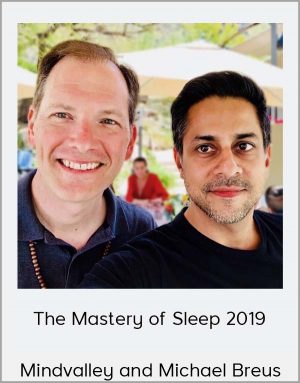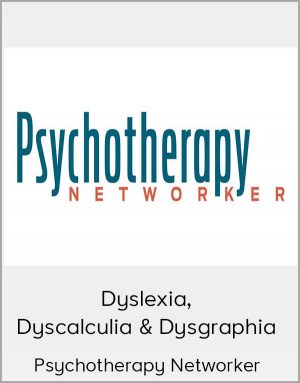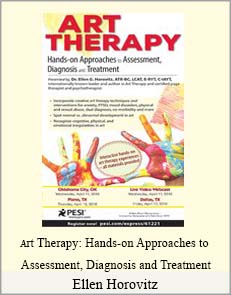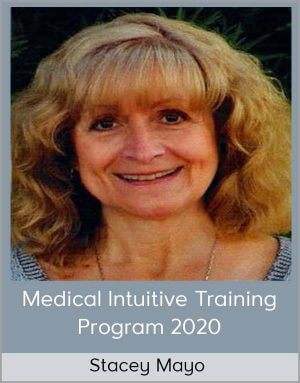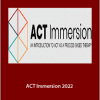Steven C.Hayes – ACT Immersion 2022
$100.00$499.00 (-80%)
The burden of mental and behavioral health problems has only grown, effect sizes have stagnated, and we still don’t really know if our clients have improved.
Steven C.Hayes – ACT Immersion 2022

Check it out: Steven C.Hayes – ACT Immersion 2022
Learn ACT from Dr. Steven C. Hayes over 10 Modules, including 16 hours of videos, written materials, real plays, clinical tapes, and audio exercises
Improve your clients’ long-term outcomes and see change happen with
Acceptance and Commitment Therapy (ACT)
A PROCESS-BASED THERAPY
From the desk of Dr. Steven C. Hayes
Reno, Nevada
Dear friend,
As therapists, we share the exciting goal of helping clients deal with adversity and foster lives of greater prosperity.
This is a huge undertaking as well as a tremendous privilege…
And it comes with challenges, not the least of which is this question:
Are our clients actually getting better?
If we’re honest with ourselves, so far we have had to answer: we don’t know!
It’s difficult to judge the effectiveness of our work amid the complexities of real-life, multivariate therapy situations.
Any practitioner can remember a time when a session went very well, ending with sincere thanks from the client… but despite that sincere praise, the client ultimately sank deeper into the problems we thought had been addressed.
Conversely, it’s possible for your work with a client to appear unsuccessful on the surface, only to receive a letter several years later from the same person crediting you with their subsequent positive transformation.
All of this means, in psychological intervention, something is going on at a deeper level — beyond the surface content, beyond the praise of a client, and beyond how “smoothly” a session goes.
“Satisfying Our Desire to Help Our Clients”
To combat this uncertainty and to satisfy our desire to help our clients, more and more practitioners have moved to evidence-based therapy forms.
Knowing that a protocol has been tested with a specific syndrome or population gives us at least some reassurance that we are helping.
However, while the promise of evidence-based protocols has been appealing, it can lead to a “by the book” approach that can feel restrictive and undermine clinical creativity. As any therapist can attest, following these protocols still doesn’t always guarantee long-term results or make it easier for us to know how a client is doing.
To understand how we ended up in a protocol-dominated therapy world and to illuminate an exciting new path forward, let’s take a look at a little bit of history…
“Medicalizing” Human Psychology
Over the last half-century of psychology theory, we’ve tried to adapt to the modern world as a community of mental and behavioral health practitioners by “medicalizing” human suffering.
This means we got good at categorizing people into syndromes and subsyndromes, the DSM-5 has ballooned into nearly 1,000 pages of diagnosable disorders and conditions, and subsequent reported rates for mental disorders have skyrocketed across all populations.
To treat this wandering target of syndromes and subsyndromes, we (as a field and set of professions) created a corresponding path for producing evidence-based therapies that looks something like this:
Come up with a treatment concept for a specific condition (such as generalized anxiety disorder)

Turn it into a protocol for that condition

Test it in controlled studies with a group of such patients and demonstrate symptom reduction
In spite of our best intentions, however, this “medicalized” approach hasn’t paid off.
The burden of mental and behavioral health problems has only grown, effect sizes have stagnated, and we still don’t really know if our clients have improved.
All too often this leaves us feeling stuck and “shooting blind” because we have only limited ways of knowing whether the protocols we’re using are making any difference on an individual basis.
But if syndrome-based protocols leave us feeling confined and are not even producing the results they promise, what should we do instead?
Of course we are able to apply our intuition and relational connectivity to our client interactions, even without a scientific framework.
But in order to provide therapy with lasting impact, we need underlying scientific guidance to give direction and greater certainty to our creative therapy endeavors… which leads us to the big question:
Is there an evidence-based alternative to stringent protocols?
I first asked this question nearly 40 years ago…
In 1982, we did the same thing every other evidence-based therapy school did.
We had a couple of new ideas. We generated therapy protocols. We tested them and found that they worked.
Instead of rushing them out the door, however, we file-drawered most of the studies and invested the next couple of decades in a different strategy — one we felt would be much more widely applicable and that now decades later has allowed us to finally move beyond protocols and syndromes:
We looked at the changes that were taking place when people were actually getting better, not at a surface level, but at a deeper level of the underlying processes.
During therapy, a lot may be going on, but we found that what really matters is improvement in a small handful of “core processes” of change.
It is changes in these processes that accurately predict long-term outcomes.
Even more encouraging was the ultimate realization that, by looking at the processes, we could go beyond diagnosing syndromes and assigning protocols.
Looking at Processes vs. Syndromes
When referring to processes of change we mean predictable, empirically-established sequences of modifiable biopsychosocial events that lead toward desirable client outcomes in a dynamic, progressive, and multilevel way.
To show the benefit and simplicity of looking at the processes rather than only at symptoms, let’s compare the two approaches.
For example, a group of people who share the same surface-level problem (such as anxiety) might share the same kinds of symptoms, but the processes at the root of their respective difficulties might be completely different, such as being overly fused with certain thoughts, or avoiding anxiety-inducing stimuli, or losing touch with the present moment and constantly being pulled into worries about the future or replays of past negative experiences.
Conversely, several clients might all struggle with the same underlying process (such as an unwillingness to experience unpleasant emotions), which might manifest as a wide variety of surface-level symptoms (such as addiction, workaholism, or an eating disorder).
That’s why a protocol for an eating disorder sometimes works, because it happens to address the right underlying processes for one person, but the same protocol applied to another person might fail because it doesn’t address the right underlying process for that individual.
The 6 Core Flexibility Processes
We ultimately identified 6 core psychological flexibility processes which could be directly addressed through therapy to produce dependable lasting effects. These psychological processes in turn were nested within biological and social/cultural levels (each of which also contain change processes).
At the psychological level the more of these flexibility processes a person exhibits, the better they will do in the long run.
These 6 processes are:
Acceptance
The inverse of experiential avoidance, acceptance involves the active and aware embrace of experiences without unnecessary attempts to change their frequency or form. Acceptance (like its partner, defusion) in ACT is not an end in itself, but is fostered as a method of increasing values-based action.
Defusion
Defusion attempts to change the way an individual interacts with (or relates to) thoughts by creating contexts in which we can look at thoughts instead of from thoughts. This allows their unhelpful functions to be diminished. Using a wide variety of techniques, defusion can be used to help a person separate their innate identity from their thoughts.
Present Moment
The desired end of present moment work is to experience the world inside and out more directly, and to allocate attention to what the present moment contains flexibly, fluidly, and voluntarily. This goal is reached by contemplative methods and training in attentional flexibility that support ongoing non-judgemental contact with psychological and environmental events as they occur.
Contextualized Self
Human language leads to a sense of self as a locus of perspective and provides a transcendent, spiritual, socially-interconnected side to human awareness. This sense of self is important, in part, because it fosters all of the other flexibility processes and provides a sense of belonging and connection that empowers our life journey.
Values
Values are chosen qualities of purposeful action that cannot be obtained as an object but can be only instantiated moment-by-moment. Life directions in various areas (such as family, spirituality, career, etc.) can be chosen, undermining avoidant, compliant, or judgmental forms of motivation that are weakly linked to real behavior change.
Committed Action
Developing ever-increasing patterns of values-based action is the ultimate goal of ACT. Whenever behavior change efforts lead to contact with psychological barriers (e.g. becoming experientially avoidant or fused with certain thoughts) they can be addressed through other ACT flexibility processes. As a result, concrete goals that are values-consistent can be achieved more readily.
When You See the Processes Move…
Over the years we developed concepts and measures that focus on these processes. We found that learning to see and address these 6 processes will enable you to see change happen in real time and know that it matters, not just because your client praises your work or because symptom reductions take place, but because you’ve actually seen the processes move.
And after 20 years of research, studies have now shown that working to move these underlying processes has far greater breadth than only working on specific surface-level conditions or syndromes. When flexibility processes move, good outcomes follow.
The approach based on addressing these processes came to be known as acceptance and commitment therapy, or ACT.
Acceptance and Commitment Therapy
ACT is based on the 6 psychological flexibility processes outlined above which, when implemented by clients, consistently help them to do better in the long run.
By addressing the underlying processes directly, we can individualize treatment and see whether a person is improving based on watching the processes move. That means also that we can be more confident about when treatment has produced lasting effects.
ACT has developed into a huge global movement encompassing tens of thousands of therapists, and along with related approaches has transformed the way we conduct therapy.
The movement is producing a tremendous body of research: we have passed 800 randomized trials in a total of over 5,000 studies.
Now, that’s a huge body of work, but what’s really important about it is what it suggests: these processes of change, these liberation processes, are what makes the difference in human lives.
Why Therapists and Clients Love ACT
Therapists and practitioners from all walks of life are embracing ACT, and for a variety of reasons.
Humanists enjoy being able to use many parts of their existing arsenal while having an evidence-based foundation, CBT practitioners are excited to implement work in values in their practice, applied health professionals see how flexibility processes can alter how they talk to clients…
…And many others feel particularly drawn to the focus on mindfulness and the integration of wisdom traditions.
In total, there are 6 main reasons why therapists are drawn to it and why clients love it.
1. It works with virtually any effective intervention form.
Once you understand the change processes, you’ll understand when other therapies work and when they don’t, so you can use them more flexibly and continue to use many of the intervention forms with which you are experienced. You can also be more creative and have more fun in your work. This means that you don’t have to abandon what you already know works well; instead, you can refine and use it even more effectively and with a better understanding of why it works.
2. It allows you to see how your clients are improving.
Seeing in real-time how clients are improving places you in a position where your clients become your teachers, because you can try different things and watch those evidence-based processes move — and if they move substantially, we know the long-term outcomes are likely to be good.
3. It applies to you personally.
ACT is based on the psychology of the normal, and last time I checked, therapists and practitioners are people, too. It is an empirical fact that those who learn how to employ ACT and apply it to themselves experience lower professional burnout and a higher sense of personal accomplishment. They feel personally uplifted as well as professionally empowered to bring all of the things that they already know into an evidence-based model.
4. It resonates with clients.
Therapists routinely report that incorporating ACT into their existing practices changes the way they interact, and their clients take notice. Not only are clients experiencing transformative results from the approach, they are even teaching others in their circles about what they have learned. For these reasons, it isn’t unusual for therapists who use ACT to become highly sought-after.
5. It helps with almost every major psychological issue.
Unlike so many protocols that are tied to specific symptom presentations, ACT is applicable to virtually all people regardless of circumstances, culture, or complaint. The processes that we’re targeting are relevant to human prosperity and are based on a decades-long program to unravel the human mind. Anywhere that humans go, their minds go with them, so if you know how the mind gets in the way and how to unlock that problem, you will likely be able to help the individual regardless of their defining external symptoms.
6. It frees your clients from getting “stuck.”
Because you are addressing underlying processes rather than following a prescribed protocol, you will know what to do if it seems like your client is hitting a wall in therapy… just switch to working on one of the other underlying processes, and keep trying new things until you see the processes move. There is no reason ever to feel “stuck” again.
As you can see, there are many reasons why ACT has gone far beyond the purview of its original founders (including me!) and has become a vibrant movement with a life of its own, with a vibrant community of practitioners all around the world.
How to Learn ACT
Over the last two decades, I’ve taught ACT to people at workshops all over the world, and have taken part in hundreds of studies demonstrating its efficacy.
I have concluded learning ACT consists of four parts:
1. Experience the impact of flexibility processes in your own life
2. Understand the theoretical and philosophical foundations of the ACT model
3. Learn to identify the flexibility processes and “read” them in a person’s behavior
4. Gain the practical skills to use ACT methods as well as methods you already know to make the processes move
In the past, the only way to be trained by me in ACT as a process-based approach was through in-person workshops or by joining my lab.
With my first-ever online course, ACT Immersion, practitioners from around the world will be able to benefit from what I’ve learned over these decades about how to learn ACT, independent of location or travel availability.
The course is designed around the four principles outlined above, which means by going through the course, you will personally experience the impact of the flexibility process, understand the basis of the ACT model, learn to identify and read the processes of change, and lastly, gain proficiency in applying the techniques to make the processes move in real therapy contexts.
The result of 40 years of work
ACT started with a small team in my small lab nearly 40 years ago. That small team eventually had a hand in changing the trajectory of evidence-based intervention.
Some things that seemed geeky at the time (e.g., the philosophy of functional contextualism, developing a parallel basic science of cognition called Relational Frame Theory or “RFT” when we needed basic science to help refine processes of change), I can now see have been fundamental in moving ACT practice and research forward.
In a sense, as I wind down my academic career, I’m inviting you to become an honorary lab member and to benefit from what I’ve learned over these decades about how to learn ACT. Every step of the way I will do my best to help you benefit.
This is my course — and I had free rein in designing it. I had media professionals to help me, but nothing I think is important has been left out.
Please read on for the details about the course — I’d love to have you take part.
Introducing…
Learn how to use acceptance and commitment therapy from Dr. Steven C. Hayes, one of the movement’s initial co-founders and leading ongoing propagators.
Over 10 online modules, with more than 16 hours of video material and extensive supplemental learning materials, course participants will learn how to read the 6 psychological flexibility processes and target them with a wide range of exercises. Dr. Hayes demonstrates first-hand how to effectively and skillfully apply ACT through clinical tapes, experiential excises, and “real plays” — unscripted conversations about real-life scenarios.
After completing this course, practitioners will have a clear understanding of the underlying processes of change and the ability to see and identify them using the Hexaflex model. This will allow you to flexibly and creatively apply ACT in your own practice and use your existing therapy arsenal even more effectively to create lasting impact for your clients.
Course Format
In the early days of ACT, training opportunities were purely experiential because of the personally relevant nature of the therapy form.
In creating a course that is completed entirely online, great care was taken to not only facilitate theoretical learning, but also to foster an emotionally relevant personal experience for every participant.
That’s why the core of the course consists of recordings from a special live event, hosted for the purpose of course content creation. The event was a unique, three-day workshop with a group of 30 mental health professionals.
This means that as you are watching, you will be able to be touched by the exercises as presented, feel the energy of the room, and see in real time how certain stories and exercises “land.” It’s this direct and personal experience of the impact of psychological flexibility that will subsequently allow you to apply these methods more effectively in your practice.
Course content and materials are in English, and all videos will include subtitle options in English and Spanish.
Course Structure
The course is designed to facilitate self-paced, online learning. The 10 modules will be released at a rate of one module per week, but you are welcome to go through the material at a more leisurely pace, as your schedule permits. With lifetime access to all course material, you are under no obligation to rush through it and will be able to access the material anytime in the future. When updates of course materials are made, you will have full access to these as well.
The first three modules of the course will lay the groundwork for understanding the theory behind ACT: understanding the model as well as an expansion of the model into core yearnings and pivots — a unique take Dr. Hayes developed by considering the evolutionary origins of flexibility processes.
In modules four through nine, you will learn about each of the 6 core processes. In each of these “Core Process” modules, where applicable, you’ll learn:
- Which underlying human yearnings are driving each process (giving you an even deeper understanding of these processes and opportunities to inspire change)
- How to creatively pivot from inflexibility to flexibility
- Basic data about the human condition as pertains to the core processes
- Experiential techniques and exercises to address each of the processes
- How to assess and read movement of these processes — allowing you to clearly see when a client is beginning to change in front of you
- How to integrate each exercise and technique into the therapeutic relationship
- How to socially extend work in each core process from the individual to a larger social context
Finally, in module 10 you will get insights and practical tools for applying ACT in your practice and guidance around case conceptualization.
Course Curriculum
Module 1: Introducing ACT
- Why a process-based approach like ACT is more effective than protocols for syndromes
- The psychological flexibility model
- ACT’s roots in evolutionary science
Module 2: Core Yearnings
- The ACT conceptual toolkit (including RFT)
- Understanding the 6 core human yearnings
- How our attempts to meet those core yearnings can trap us in psychological inflexibility
Module 3: Pivots
- The Pivot concept: moving from psychological inflexibility to flexibility
- The 6 core ACT pivots
- Pain of presence/absence
Module 4: Transcendent Self
- Noticing consciousness
- Yearning for consistency
- The foundation of our sense of self, and of transcendence and spirituality
- The processes of pivoting from aloneness to greater connection with self and others
Module 5: Defusion
- Why we so often live in our own heads, including the role language plays
- Exercises and techniques to help our clients look at thoughts, not from thoughts
- Cognitive flexibility
Module 6: Acceptance
- How a desire to feel good can foster avoidance of feelings
- Learning to instead feel good
- The importance of willingness
- Guidelines for safe and effective ACT exposure work with clients
Module 7: Present Moment
- How language and the mind can pull our attention from the present
- Ways to increase attentional flexibility
- Adopting a “wowfulness” mode of mind
Module 8: Values
- The distinction between values and goals
- The importance of holding values lightly but pursuing them passionately
- Helping clients find their direction
Module 9: Committed Action
- The critical role of taking committed action in working toward values
- The need to make a commitment to behavior change even in the face of what you struggle with
- Ways to maintain a trajectory in line with values
Module 10: Case Conceptualization
- A matrix to use for case conceptualization
- Network analysis of cases using ACT principles
- About the therapeutic relationship in ACT


